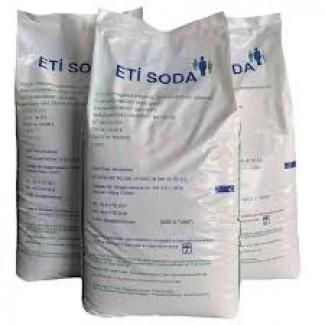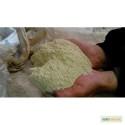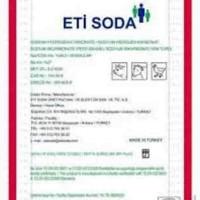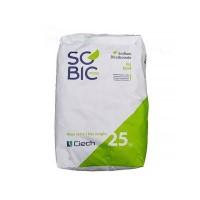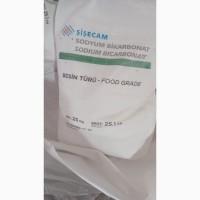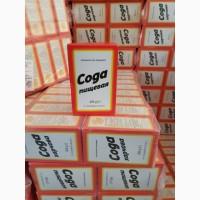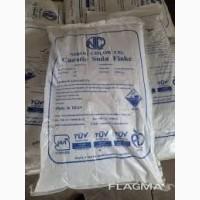Sell / buy
Baking soda (sodium bicarbonate), Kiev region.
Цена22,850 UAH.
Region:all of Ukraine,
Kiev region.
(Kyiv region, Fastivskyi district, village of Mala Snitynka)
Updated:
Sodium bicarbonate a product actively used in animal husbandry as a food additive. Under normal conditions, the animal's body can independently regulate the pH level. This corresponds to the natural buffer system. In practice, animals are most often given highly concentrated feed, characterized by rapid fermentation and acid action.
The influence of soda on the health of farm animals
Neutralization of acidic compounds through the feeding system is performed by adding buffer substances. The most common and affordable product with a high buffer capacity is baking soda. However, this is far from the only advantage of using soda in the diet of farm animals.
Systematic inclusion of soda in the nutrition of cattle contributes to an increase in milk yield. This happens thanks to the buffering and neutralization of the digestive system. In addition, the resulting product has higher fat content. The advantages of using soda include its low cost and ease of introduction into the animal's diet.
Consumption of soda by hens improves the quality of eggs. This characteristic means an increase in the thickness of the shell and parts of the egg, a decrease in marriage. If we talk about turkeys and broilers, it is worth noting the increase in the weight of poultry.
Soda in the diet of pigs also has a preventive property, which allows you to minimize the likelihood of developing esophageal and stomach ulcers, as well as such a phenomenon as "weak legs".
(//tractor-service.com)|| |155
Рекомендовані норми споживання соди
For feeding cattle, the recommended rate varies from 40 to 80 g/day, for calves - 20-40 g, sheep - 10-30 g. It is recommended to include soda in the diet even when breeding laying hens, a sufficient rate consumption is considered 0.3-0.5 g/day.
To adjust the ration of pigs, it is important to consider the category of the animal. Forsows and lactating sows, the recommended amount is 25-30 g, for fattening pigs, the amount is significantly reduced and amounts to 5-20 g.
Deoxidation is not necessary for all feeds. Silage, which contains a large amount of acetic and oleic acid, is subject to the procedure. A diet based on silage can cause ketosis in cows. As a result, hypocalcemia and indigestion develop.
Soda is added to silage, the pH of which is less than 3.8, as well as masses with a pH of 3.9-4.2 and the content of acetic and butyric acids at the level of 40 and 10%, respectively.
Sodium bicarbonate creates the necessary conditions for the microflora of the rumen, allows you to reach the peak of feed consumption earlier, as well as to adapt the animal to the consumption of high-energy feed.
The influence of soda on the health of farm animals
Neutralization of acidic compounds through the feeding system is performed by adding buffer substances. The most common and affordable product with a high buffer capacity is baking soda. However, this is far from the only advantage of using soda in the diet of farm animals.
Systematic inclusion of soda in the nutrition of cattle contributes to an increase in milk yield. This happens thanks to the buffering and neutralization of the digestive system. In addition, the resulting product has higher fat content. The advantages of using soda include its low cost and ease of introduction into the animal's diet.
Consumption of soda by hens improves the quality of eggs. This characteristic means an increase in the thickness of the shell and parts of the egg, a decrease in marriage. If we talk about turkeys and broilers, it is worth noting the increase in the weight of poultry.
Soda in the diet of pigs also has a preventive property, which allows you to minimize the likelihood of developing esophageal and stomach ulcers, as well as such a phenomenon as "weak legs".
(//tractor-service.com)|| |155
Рекомендовані норми споживання соди
For feeding cattle, the recommended rate varies from 40 to 80 g/day, for calves - 20-40 g, sheep - 10-30 g. It is recommended to include soda in the diet even when breeding laying hens, a sufficient rate consumption is considered 0.3-0.5 g/day.
To adjust the ration of pigs, it is important to consider the category of the animal. Forsows and lactating sows, the recommended amount is 25-30 g, for fattening pigs, the amount is significantly reduced and amounts to 5-20 g.
Deoxidation is not necessary for all feeds. Silage, which contains a large amount of acetic and oleic acid, is subject to the procedure. A diet based on silage can cause ketosis in cows. As a result, hypocalcemia and indigestion develop.
Soda is added to silage, the pH of which is less than 3.8, as well as masses with a pH of 3.9-4.2 and the content of acetic and butyric acids at the level of 40 and 10%, respectively.
Sodium bicarbonate creates the necessary conditions for the microflora of the rumen, allows you to reach the peak of feed consumption earlier, as well as to adapt the animal to the consumption of high-energy feed.
|
Магазин, контакты | |
ТОВ White Line/ отзывы, инфо./ activity evaluation | |
|
Телефон:
0974xxxxxx
show
| |
| Telegram: 0974601231 | |
| Viber: 0874601231 | |
| Whatsapp: 0974601231 | |
| http://www.bilaliniya-plus.store | |
Ad ID: #1300484
(added by a registered user, registration date: 04-27-2024)
Added / Updated: 09-26-2024 08:17 (relevant, until: 09-26-2025)
Permanent ad address:
Showed / watched for today: ?, total: ?
Similar ads
Among them there are many interesting...
